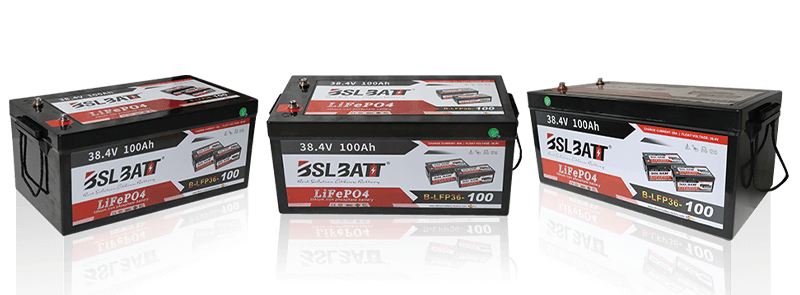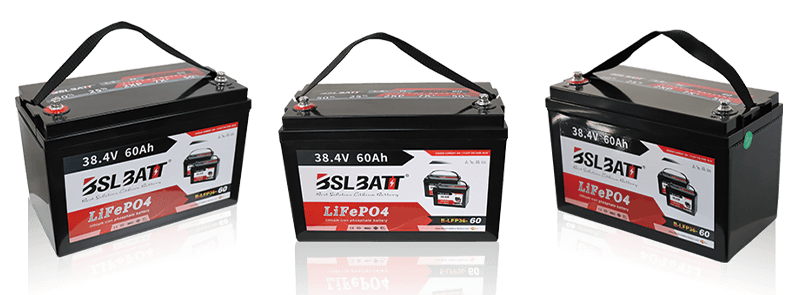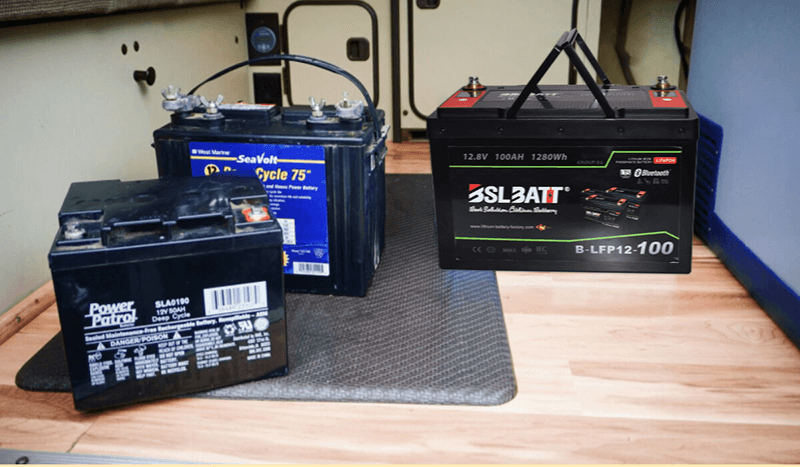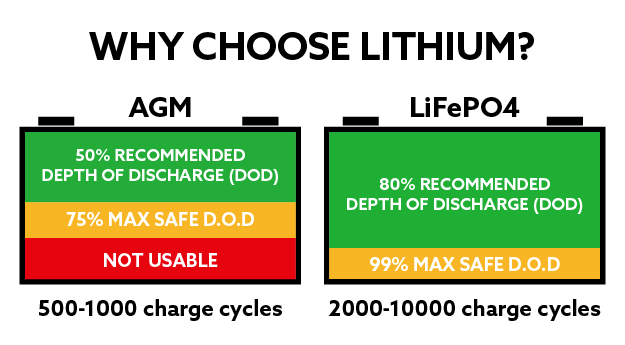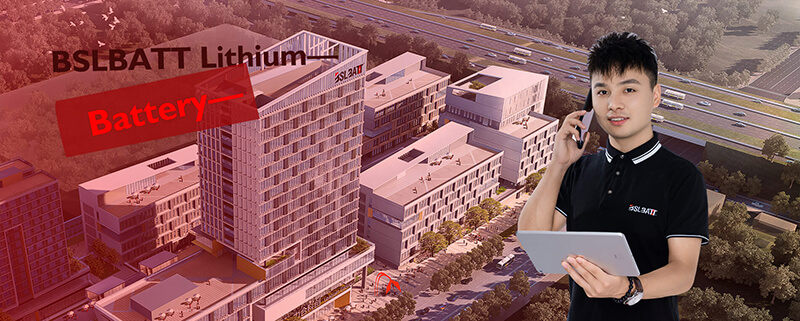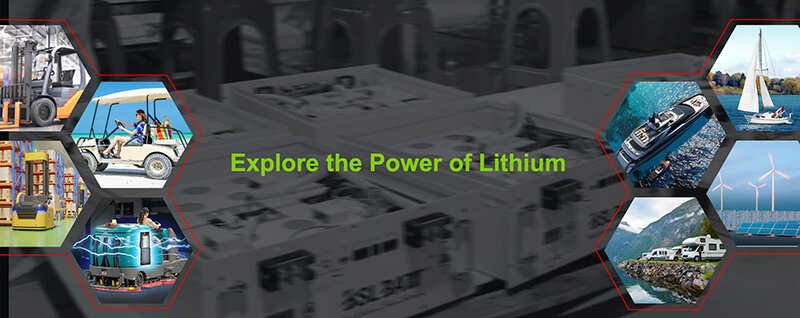Industry Application
Product Type
Why Choose Lithium Battery for Your Sailboat?
| There’s plenty of buzz in the cruising community about lithium-ion batteries. Are they an option for your boat?
In this week’s blog, we’re discussing the benefits of upgrading your sailboat to lithium batteries. In an unforgiving environment, like the open ocean or a lake, being able to run critical systems like radios, running lights, and navigation systems are vital to safety and survival. We believe BSLBATT LiFePO4 batteries are the best choice for power because of the many benefits and dependability of lithium batteries. Today, we’ll review models that our customers have used with great success.
Everything on our sailboat runs off the battery bank, not only while anchored out but also while sailing with the engines off. Having a sufficient battery bank to supply those power needs is incredibly important. Having all the fancy electronics in the world on our boat won’t matter if we can’t power them. That’s why we say lithium batteries are the most important upgrade on our boat. Once we’ve got solid power, then we can start thinking about all the fun stuff they can power. So, choosing lithium was a no-brainer.
Why Lithium vs AGM? There is simply no comparison. Lithium batteries are leaps and bounds better, stronger, lighter, smaller, faster, safer, easier, greener, and more powerful than lead-acid or AGMs. Period. So why does anyone still buy them? Money Talks Price. There is a common misunderstanding that lithium is drastically more expensive than AGMs or lead-acid batteries. But first things first. Let’s eliminate flooded lead-acid as an option. Lead-acid batteries used to be the best and only option but we feel it has absolutely no place on a boat anymore. Toxic off-gassing, storage issues (must be stored in a nonliving area, upright in a well-ventilated area) maintenance (topping off liquids once a month), lack of efficiency, and safety risks make it a no go in today’s technology-filled world. We feel so strongly about this, we even swapped out our engine and generator batteries for lithium. You know, because they are stored right under where we sleep! How could we sleep well-knowing lead-acid batteries were off-gassing toxic fumes under our mattress. So that leaves us with AGM and Lithium as viable options. At first glance these batteries seem fairly similar: They are both “8D” size, the amp hours are similar…sure the AGM weighs about 40% more but the lithium battery looks grossly overpriced in comparison to the AGM. The sticker shock is enough to send anyone running, and trust me that is EXACTLY what we used to think. The problem here is the AMP hour conundrum. Lithium batteries are so drastically different from AGM and there is way more to consider than just the factory-rated AMP hours printed on the spec sheet.
Useable AMP Hours What we really need to be looking at when comparing any batteries is the useable amp hours, not the amp hours printed on the battery. Looking at the useable amp hours we can clearly see that the AGM battery has almost half the useable amp hours of the lithium. So, to get a similar amount of useable amp hours we would need two AGM batteries to equal our one lithium battery. Life Expectancy The next big distinguishing factor between AGM and lithium batteries is life expectancy. Lithium lasts at least twice as long as an AGM (and most likely triple and beyond). That means we would go through at least double the amount of AGM batteries during the lifespan of our lithium bank. Looking no further than this, it’s easy enough to see that we would need at least four AGM batteries to have similar usage as our one lithium over time. So not only is that a lot more weight and space taken up, but now our price is now practically the same (probably cheaper if you consider installation costs times two). But let’s not stop there, because lithium still has a lot of bragging to do. Here are some of the other perks we get by going with lithium: Super Model Skinny – Lithium is almost half the weight of lead acid and takes up way less space per useable amp hour. This means more battery in less space…without the drama. How Low Can You Go – Lithium batteries can be discharged down to 10% or lower. Most lead-acid and AGM batteries do not recommend more than 50% depth of discharge. Overall battery life is seriously affected by higher levels of discharge in AGM (and lead-acid) yet only slightly affected in lithium batteries. Mad Efficient -Lithium batteries are 99% efficient meaning that they allow the same amount of amp hours both in and out. Lead-acid batteries are less efficient and have a loss of 15 amps while charging and rapid discharging drop the voltage quickly and reduce the batteries’ overall capacity. AGM batteries are slightly better than Flooded Lead Acid but nowhere near as good as Lithium. (If you want to run high draw electronics like an Air Conditioner or water heater, you’ll want lithium batteries.)
Suck It Up Fast – Lithium Batteries have very little internal resistance and almost no absorb time so they can suck up power and charge all the way to 100% really fast. With old school batteries, there is a 3-stage charging cycle: 1. bulk phase where you push in a bunch of power to get the battery to 80-90% charged. 2. absorb phase where a charge is held back until the last 10% charge can be reached (this is because lead-acid has a lot of internal resistance at this phase). 3. float phase where the charge voltage drops because the battery is full. It’s that 2ndabsorb phase that holds things up big time. It can take a really long time to get the last 10%…like hours. Even Keeled – Lithium batteries maintain their voltage during use, which is better and more efficient for all our electrical devices. Lithium doesn’t care if it’s at 30% or 95% DOD and they won’t lose capacity with heavier loads. This is especially important for things like AC, electric cooking devices, water heaters, etc. that pull a lot of power. Lead-acid and AGM batteries will drop voltage consistently throughout the discharge cycle, they’ll need to be fully charged on a regular basis and heavy loads will quickly suck the life out of them. Drama Free – Lithium requires no maintenance. I can’t imagine pulling off our cushion, clearing out the storage, removing the shelves, and having to add distilled water (one more thing to have to carry and store) to all our batteries every couple of weeks or so. That would be a horrible pain in the you-know-what, and another great reason not to buy lead-acid.
Safety We’ve all heard about cell phones and computers with lithium batteries bursting into flames. Scary (especially considering we carry these items in our hands) but this isn’t the same type of lithium. Our lithium batteries are LiFePo4, it’s a different technology and it’s way safer. Our lithium batteries have nifty circuitry built in that keeps the battery pack safe and under control. It’s called the battery management system. Reputable lithium battery companies have lots of systems in place to make sure each battery has a BMS installed and is configured correctly.
Go For A Good Warranty Whichever brand of battery you choose, make sure it has a solid warranty. At BSLBATT Lithium sailboat batteries we have a full 10yr warranty to give you peace of mind |
A Guide to Choosing the Best 48V Lithium Golf Cart Battery
Would it be worth investing in a 48V ...
10 Exciting Ways To Use Your 12V Lithium Batteries
Back in 2016 when BSLBATT first began designing what would become the first drop-in replacemen...
BSLBATT Battery Company Receives Bulk Orders from North American Customers
BSLBATT®, a China Forklift battery manufacturer specializing in the material handling indust...
Fun Find Friday: BSLBATT Battery is coming to another great LogiMAT 2022
MEET US! VETTER’S EXHIBITION YEAR 2022! LogiMAT in Stuttgart: SMART – SUSTAINABLE – SAF...
Looking for new Distributors and Dealers for BSL Lithium Batteries
BSLBATT battery is a fast-paced, high-growth (200% YoY ) hi-tech company that is leading the a...
BSLBATT to Participate at MODEX 2022 on March 28-31 in Atlanta, GA
BSLBATT is one of the largest developers, manufacturers, and integrators of lithium-ion batter...
What makes the BSLBATT the Superior Lithium Battery for your Motive Power needs?
Electric forklift and Floor Cleaning Machines owners who seek the ultimate performance will fi...














